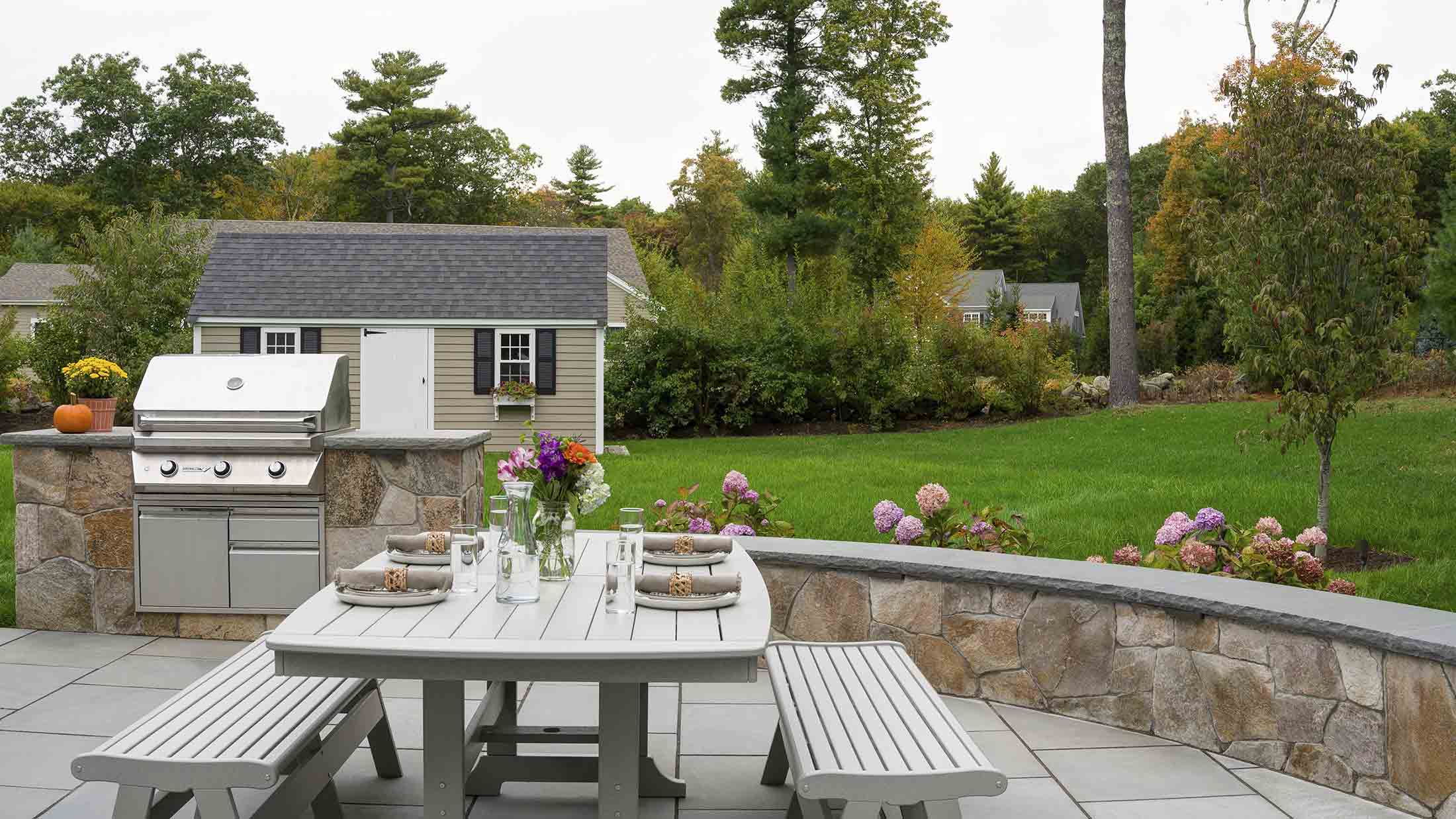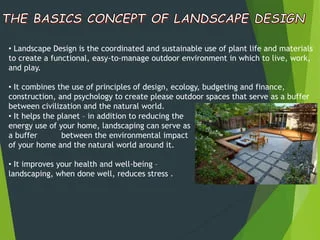Landscape Design - Questions
Table of ContentsIndicators on Landscape Design You Should KnowLandscape Design - QuestionsWhat Does Landscape Design Mean?Excitement About Landscape DesignLandscape Design - The Facts
A yard can generally be separated into 3 areas: public (the front backyard), private (the back backyard), and solution (usually the side yard). The location of task areas depends largely on the type of area, the dimension of area required, the type of task, and the preferred proximity to other tasks and structures.The outdoors wall of your house commonly functions as the initial wall or beginning point of an outside area. Inappropriate usages need to be divided, and related activities, such as food preparation and dining, need to be created to make the yard a lot more reliable and pleasurable. When making use of hardscape to create areas, use building and construction material comparable to that made use of in the home for connection from your home into the yard.
Connected rooms. Debt: Gail Hansen, UF/IFAS Using similar hardscape functions and duplicating plants draws the eye around the yard.
Landscape Design Fundamentals Explained

For emotional convenience plants are used as physical or implied obstacles for personal privacy and safety. Physical obstacles obstruct both the sight and access to a space and consist of fences, walls and plant hedges.
Physical and indicated barriers. Debt: Gail Hansen, UF/IFAS For these factors, the kinds of plants to be utilized (such as trees, shrubs, or groundcovers) must be chosen in the early stages of planning (Landscape Design). Plant types are picked for their practical capabilities so that their future function and needed space can be thought about at the exact same time

9 Simple Techniques For Landscape Design
Each plant mass remains in front of, behind, or next to, another mass. Figure 11. Horizontal plant layers. helpful resources Credit Score: Gail Hansen, UF/IFAS Figure 12. Vertical plant layers. Landscape Design. Credit Scores: Gail Hansen, UF/IFAS Duplicating plants within a mass and duplicating masses with similar plants connects the yard together. The private plant qualities have to be taken into consideration to efficiently layer and mass plants.
All plant compositions begin with the primary structure plants, the huge, mainly evergreen background plants-such as the trees and huge shrubs. These plants separate or enframe spaces, manage the dimension of the area, and offer the starting point for choosing the ideal qualities of the second layer, midground plants, for massing and infill.
Vital points in the garden should be highlighted by the use unique plants, distinctive frameworks, or yard ornaments. Noting limits or entrances to areas can be performed with gateways, arbors, and actions, or through making use of unique and colorful plants. The type and/or design motif of the yard will certainly typically aid identify the view website important points and how they must be highlighted.
Other important places in the yard are focal factors, which is utilized to aesthetically organize a designed location. Different viewpoints or point of views can reveal various make-ups in the landscape that might need a range of focal points.
A Biased View of Landscape Design

Plant forms. Credit Score: Gail Hansen, UF/IFAS After kind, appearance is the next leading function of a plant; crude, tool and great structures can be used for comparison and focus in the landscape.
The positive aroma of plants, the sound of wind in the trees, the sound and texture of water, and the shades and textures of sculptures, pots and yard furniture all include to the experience of the yard. One information that is often forgotten is the result of light on the visual appeals of the plants.

Little Known Facts About Landscape Design.
It is essential to know the ultimate mature dimension of plants so they can be put in the right place and spaced correctly when they are mounted. Giving plants space to expand is an obstacle because the common fully grown size is typically based on optimal growing conditions and the ecological problems of a site might cause a plant to enlarge or remain smaller sized.